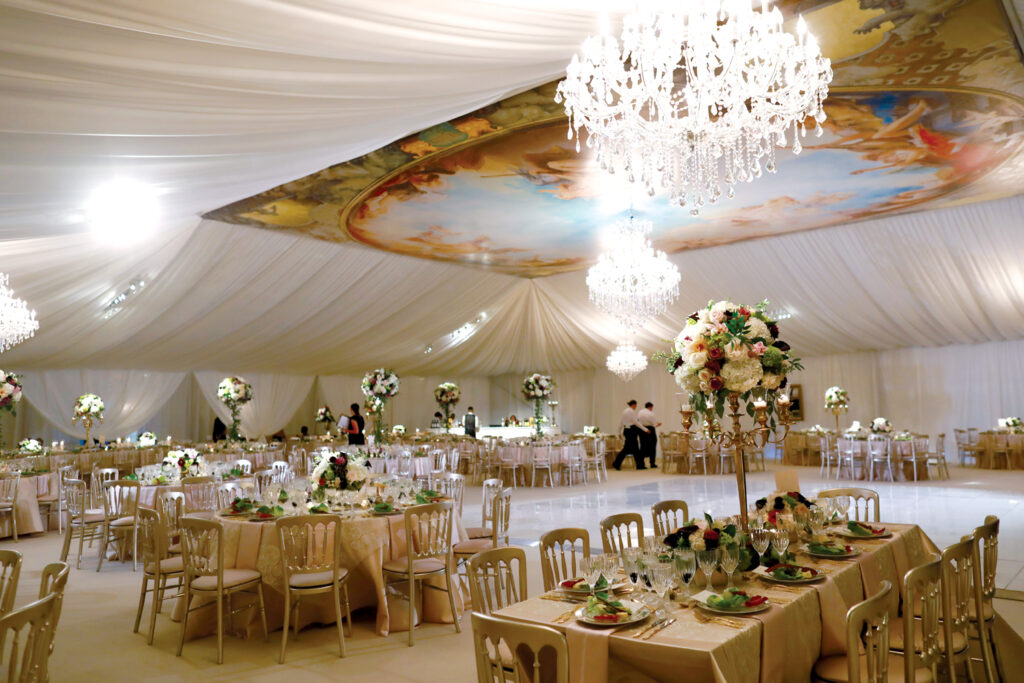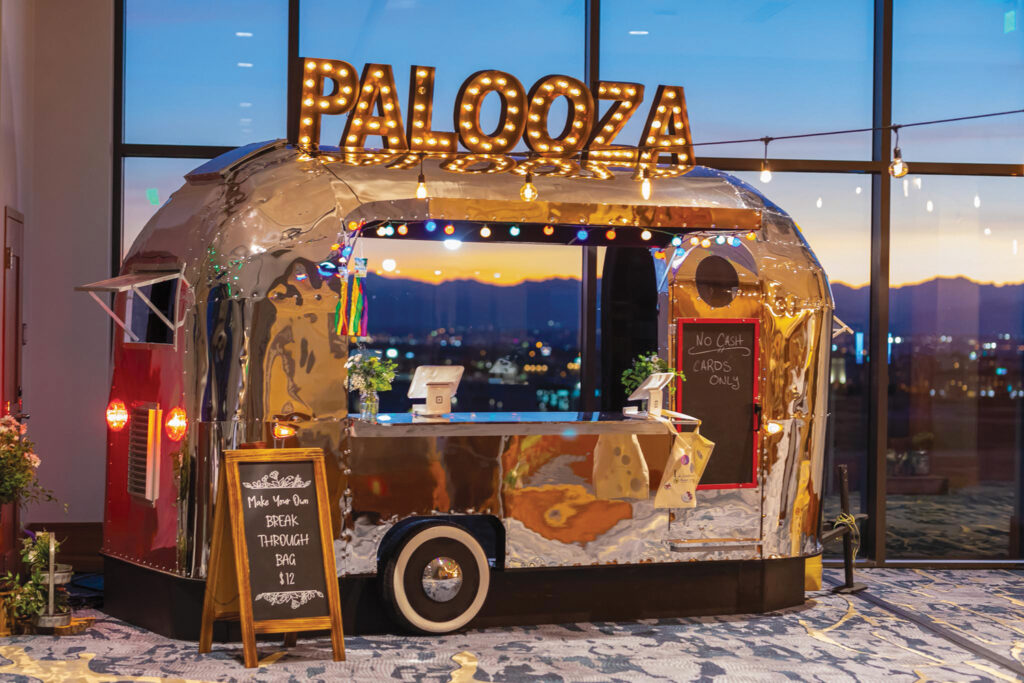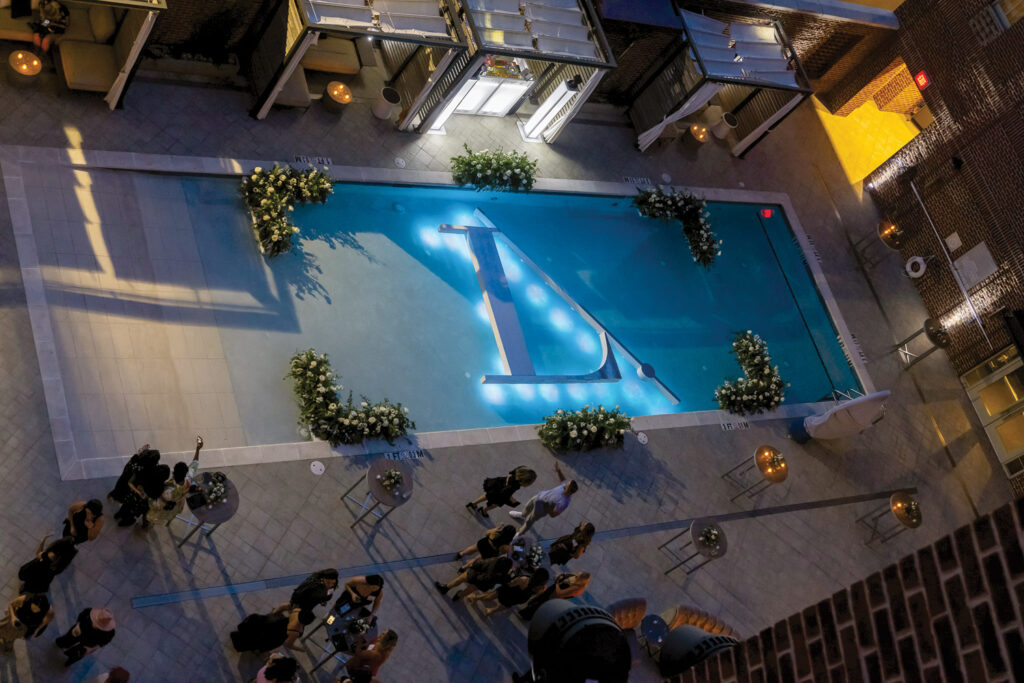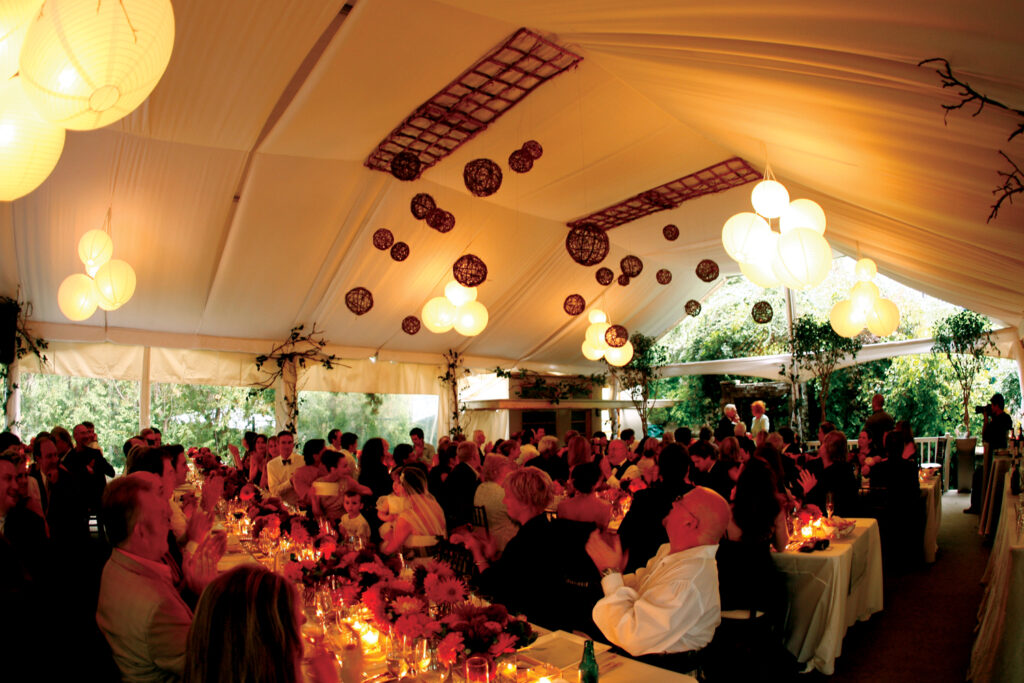Blue Spark Event Design has always prioritized customization, says Heather Pilcher, CEO/executive producer for the company that is headquartered in Orlando, Fla. If a client doesn’t bring up customization, Pilcher says her company suggests it as a way to create a more impactful event experience.
Over the years, Blue Spark has designed some memorable projects. One of her favorites was a client who requested that an Airstream trailer be displayed—on the second floor.

“Due to the logistical constraints, it was not feasible to physically transport an actual trailer to that specific area of the building,” Pilcher says. “To fulfill the client’s vision, we designed, built and installed a faux, three-dimensional Airstream trailer, tailor-made for the available space.”
The rise of social media has accelerated the interest in customization, she adds, particularly for her corporate client events.
“With the use of hashtags and Instagram-worthy photo moments, attendees now seek to engage with brands like never before,” Pilcher explains. “Just like any well-executed event, incorporating a unique experience within the brand’s atmosphere fosters a sense of connection to the brand itself. This in turn can boost sales and cultivate a greater appreciation for the company’s offerings.”

Diamond dreams, rhinestone realities
Tommy Wilson, director of event services for All Occasions Event Rental in Cincinnati, Ohio, says his company has always offered customization.
“We do a lot of custom vinyl decals on bars and dance floors,” he says. “On the tent side, we customize about 25% of our events. That number is closer to 50% if you include customized lighting.”
Wilson says one issue his team encounters is people wanting to customize but not having the budget for it. And while social media has been a big driver in terms of demand, it has propelled the clamor for certain products, making them sometimes difficult to find, potentially adding to costs.
“We try to have candid conversations with the clients early in the process,” he says. “Some are more transparent about their budget than others. There is always some sort of disconnect between the client’s expectations and the true cost.”
This can prove especially true when it comes to tents, says Melynda Norman-Lee, event manager for J J L Events Inc., in Toronto, Ont., Canada. The company specializes in outdoor events, collaborating with clients in the automotive, oil and gas, amusement park industries and more. It also works with individual clients, as well as consulting, designing and managing the custom installation of tents, tension structures, awnings, etc.
Common misperceptions she encounters are people thinking a tent is a less expensive option and not understanding what constitutes custom versus standard.
“What we find is they expect above-and-beyond service and quality for the same price as putting up a tent in a field or parking lot,” she says. “I think social media has orchestrated ‘finished looks’ that set expectations for what clients see as normal, which means they have high expectations for ‘standard.’”
Norman-Lee prefers to avoid significantly customizing the tent, since this could require engineering. Instead, the company suggests design solutions whenever possible.

“Adding leg extensions or cutting roof or wall fabric around a tree or bush don’t have to be significant budget items,” she explains. “If we have to fit those ideas into the design of the space, it can help us look better to clients as we can show we’re doing our best to keep costs down.”
But if additional modifications are needed—such as installing a frame or fabric around trees or from two levels—costs might rise, as this may require more time or additional crew. And if the modifications involve the frame itself, input from an engineer could affect the customization options the company presents to the client, Norman-Lee adds.
“It’s not always either/or, bigger or smaller, or elsewhere,” she says. “It can be an ‘instead’ solution. We look at the entire space and once we have a good idea of the client requirements and vision, we provide a suggestion or two to provide them with coverage, tents, to fulfill that desire. With the client probably being unfamiliar with tents and related products, our suggestions may not be what they had considered.”
Calculating costs
Figuring out pricing for standard packages is relatively straightforward. Calculating what to charge for customized work and justifying these expenses to clients can prove trickier, which is why being up-front about all the project entails is key.
“For every customization upgrade, we present a detailed breakdown of the options, allowing our clients to understand the value-to-cost ratios,” says Pilcher. “It is crucial to be transparent and honest about deadlines and possibilities. If necessary, we are willing to make changes or alterations based on product availability. However, if we come across clients who have unrealistic expectations regarding deadlines, we may choose to decline their event.”
Knowing the company’s overhead helps All Occasions figure out its customization mark-ups, says Wilson. The company also considers its level of experience with the custom element; if it’s brand new, the decision will be made to build in more labor to allow for potential adjustment time on-site. Creating a mockup of the element/project, building that into the pricing, is sometimes necessary as well. He also inquires about the client’s vision to help match the level of the event with the client’s budget.

Norman-Lee says when quoting, J J L Events presents clients with an itemized cost list. This helps clients determine where they want to spend their money, also providing an opportunity to discuss where they might like to make adjustments to meet their budgets.
Some things the company bases its tent customizing pricing on include:
- Any additional time required for installation/removal
- Costs required to replace the customized/modified parts
- Professional costs incurred—for example, involving an engineer or manufacturer
“When it’s a simple customization—for example, longer legs on one side—and your crew is experienced, adding a ‘premium’ line item to the quote/contract that accounts for adding the appropriate number of hours to the install time or for an extra person on the crew, will probably account for the costs of the custom work,” Norman-Lee says.

“If things are more involved, determine if the crew will need more time or people to accomplish the install and cost accordingly,” she continues. “This will affect other demands on the crew’s time, of course, and on how many projects have to be turned down or delayed to [deliver] this one customized project.”
She advises charging a “nominal fee” covering the time spent responding to the client’s request and for providing the itemized quote (when outside of “standard”) about what has been agreed upon. Include/credit this on the invoice once the contract has been signed.
“This helps weed out those who are just looking for you to do the work for them,” Norman-Lee explains. “And you get reimbursed for at least part of your time.”
Pamela Mills–Senn is a freelance writer based in Seal Beach, Calif.
SIDEBAR: From dining room to tent ceiling
The client wanted to situate multiple high-resolution projectors throughout the inside of the wedding/reception tent, aimed toward the ceiling to create an authentic looking sunset, recalls Tommy Wilson, director of event services, All Occasions Event Rental. The image would change to something livelier as the band played.
“But that option was outside of their budget, so they settled on replicating their dining room ceiling art on the tent’s ceiling instead,” says Wilson, describing this event, held for 220 guests in October 2019, as a favorite of his.
One of the first hurdles was the size of print required to cover the desired space, since the client’s dining room was smaller than the reception/dinner area. The wedding and reception were held under a single 82-by-196-foot Losberger De Boer structure divided by clear and white roof panels. The wedding and cocktails took place under the clear portion while the reception and dinner were under the white portion.
“We had a specialty photographer take lots of small, high-resolution images of the ceiling,” Wilson says. “He then stitched them together for an artist to tweak. The dining room ceiling was curved up and our image would be nearly flat. Once the image was approved, we sent it to Fred’s Tents & Canopies in Waterford, N.Y., to make the 36-by-48-foot print.”
Along with the tent, All Occasions provided a restroom trailer structure tent and catering tent, 19,000 square feet of Dura-Trac™ flooring, 9,000 square feet of turf, five crystal chandeliers, tables/chairs, dance floor, staging and more.
SIDEBAR: Making it happen
The clients wanted to use their backyard for their wedding and reception, which presented multiple challenges, says Melynda Norman-Lee, event manager for J J L Events Inc. in Toronto, Ont., Canada.
“The backyard had a small deck at the back of the house with two levels; an infinity pool with a glass surround; a pool house with a pergola overhang that sat at the back edge of the pool; and an old apple tree in a very fragile state that could not be damaged,” she recalls. “The space also included a steep hill of un-landscaped greenery and trees.”
The solution? Along with constructing a cocktail/receiving tent on the front driveway, creating more space in the back for the ceremony and reception, Norman-Lee says the company worked with an engineer to build a floor over the pool, allowing the clients to safely use that space as the main dining area for their 100 guests. J J L Events built a custom-sized tent over the pool, attaching additional small tents to create bar, band, dance and lounge spaces, keeping the entire event under one roof.
In order to cover as much area as possible between the house and start of the incline, the company worked with the manufacturer to reduce the size of one of the main tent’s sections to 8 feet rather than 15 feet.
Constructing a platform for the ceremony tent also required building scaffolding into the side of the hill.
“To help accomplish this, the crew used 5-inch screw anchors to secure the scaffolding into the hills and trees to secure themselves as they built,” she explains. “The installation took a week [of] long days.”
 TEXTILES.ORG
TEXTILES.ORG


